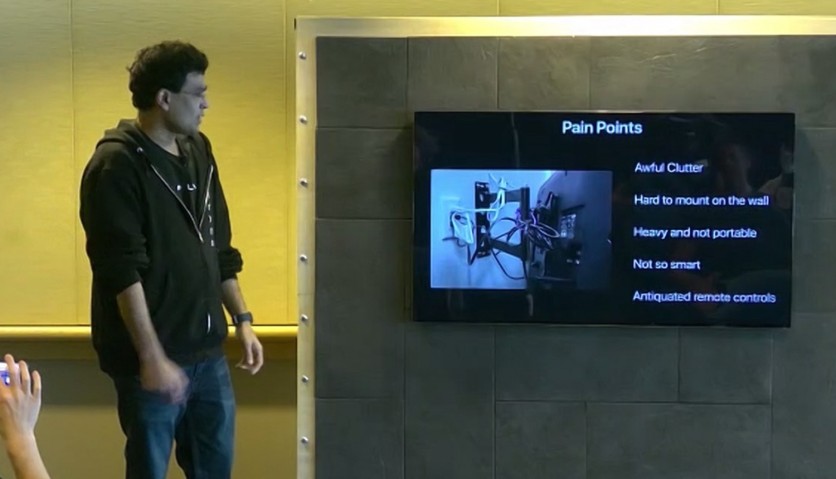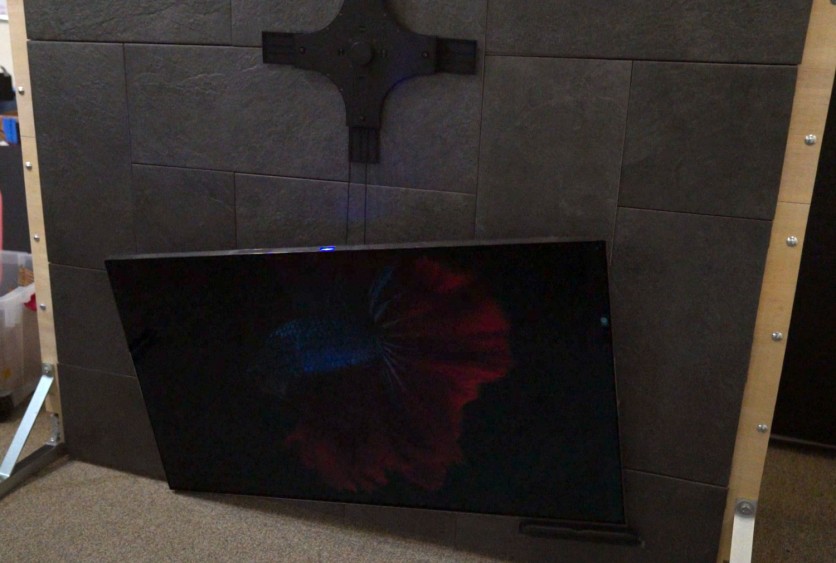Back in Janurary, CES was (as is always the case) an ensemble of revolutionary and thought-provoking technological feats. But of most interest to some, striking the perfect balance between commonplace normality and future innovation, was all but a mere cordless television screen seamlessly attached to a wall.
Called Displace, the in-home entertainment startup, maker of said wireless TV, wowed the show floor not merely in its approach to TV technology but in where it may well lead us in the future. Today, October 3rd, the firm showed off even more of its awesome display concept in a live stream, sharing details mainly on protective functions, underlying software, and essentially how it all comes together.
Displace CEO Balaji Krishnan kicked off the event with a surprising introduction into previous years' TV innovations. He first spoke on the merits of revolutionary new concepts, like curved and even glass screens, but went on to describe how little if any improvements have been made beyond these. Krishnan specifically highlights the cluttering of wires and unused TV remotes, inoperable OSs, as well as an over reliance on streaming services as potential barriers for change.

The company aims to deliver, as Krishnan himself put it, a "truly smart TV," one that isn't bogged down by incredibly poor software and one that sports far more PC and mobile-related tasks, like Zoom conferencing for instance. That's right, Displace highlighted how its own smart TV will support Zoom with a built-in camera and various other applications, like emails and calenders, with more updates coming down the line.
It's 20lb wireless TV, which is fully cordless, relies on four hot swappable batteries. These allot an estimated one month of battery life as per roughly six hours of TV use per day. The Displace TV also leverages highly powerful suction cups, its proprietary active-loop vacuum technology, which the company showed in detail how easy it is to mount, as well as how safe the product can be even in the event of a catosphere.

This was by far the main highlight, wherein a Displace employee took a hammer to the tile wall holding the TV up, which led to quite an interesting display of technology. The TV, realizing that one of its four suction cups lost integrity, seamlessly shoots out a protective adhesive in the back and foam padding at the bottom, then begins slowly lowering itself to the floor using an in-house wire that Krishnan said can go up to 10 feet in height.

As mentioned previously, the display itself has no ports. Everything is streamed wirelessly using WiFi from a remote box (base unit), which has yet to be revealed. Consumers will be receiving the TV, a base unit (which will house USB, HDMI, and other ports for peripherals), as well as a recharge station for the hot swappable batteries. The firm stated that these extras will be shown off in more detail during CES 2024.
In regards to controlling the product, as Krishnan wants to do away with unnecessary remotes, Displace will support voice and touch controls, as well as hand gestures for smooth interactivity unlike every before in a smart TV. Hand gestures were, unfortunately, not shown during the event, but will also be making an appearance at CES.
For those with the need for multiple TVs across varied rooms in the home, one exciting feature is its ability to switch between displays using facial recognition and computer vision on the fly. This feature can be turned off easily, though, if one wishes not to have their content follow them everywhere. But maybe you want two Displace TVs set side by side in the same room? Not a problem, as modularity is a major concept Displace is adhering to, with the vision to allow for literally as large a TV as 220" at 16K resolution using eight total Displace displays.
Displace initially targeted a release date of December 2023, but will have to push this back into Mid-2024, as the firm is still working on specifics, like battery weight allocations, base unit functionality, and more. Those interested can reserve one today at $500 (which is fully refundable), or several if one just isn't enough. The DisplaceTV has a current asking price of $4,499, but this could fluctuate depending on potential future updates out of CES 2024.
ⓒ 2025 TECHTIMES.com All rights reserved. Do not reproduce without permission.




